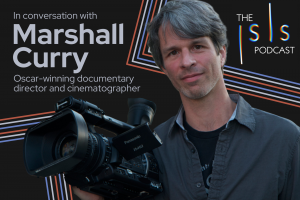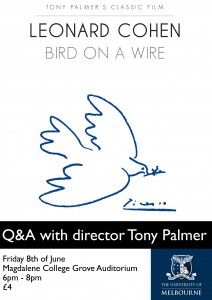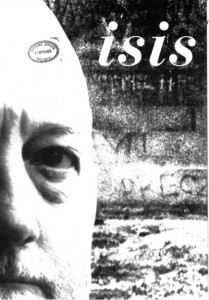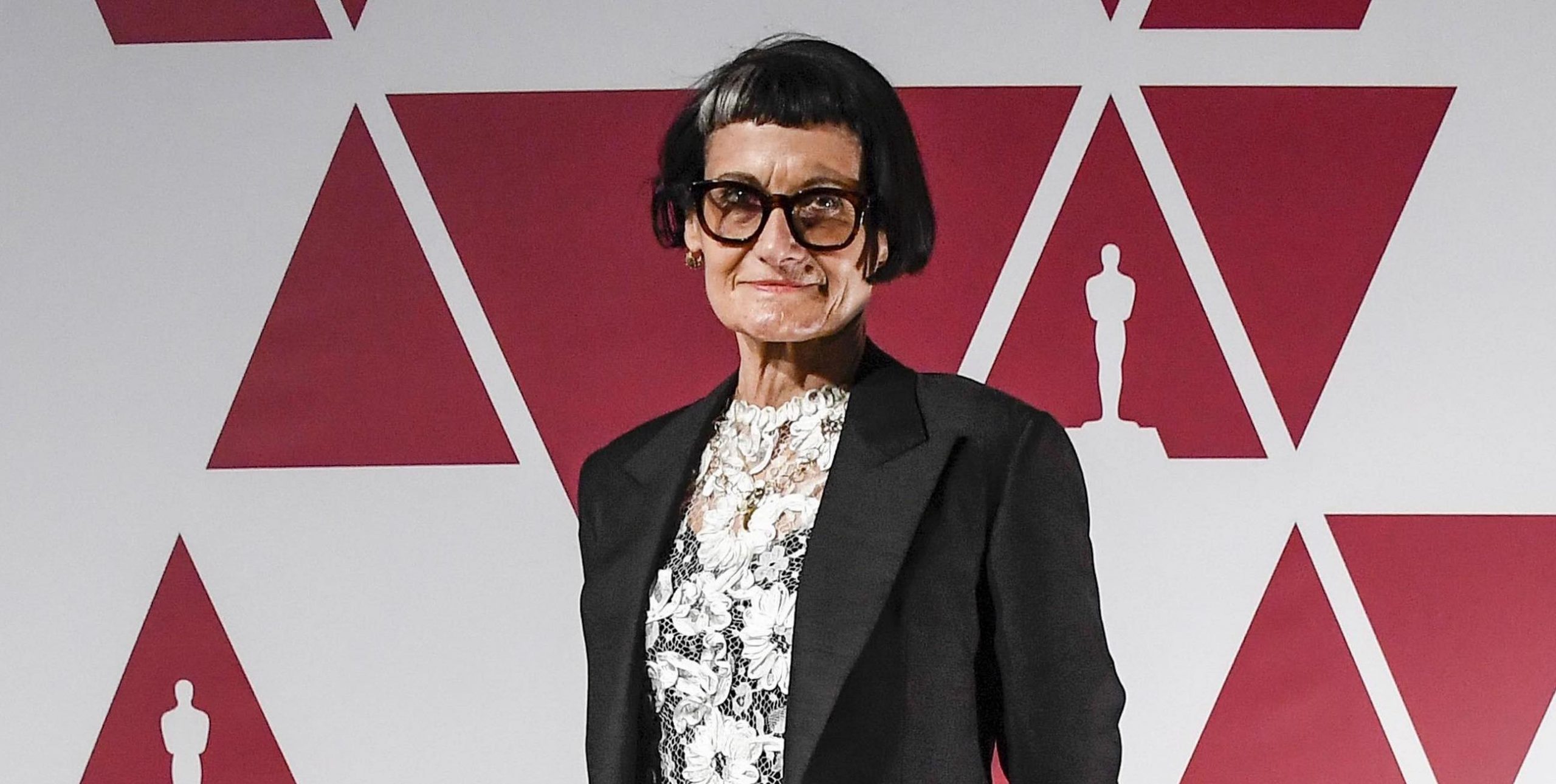
Interview: Alexandra Byrne, Oscar-winning Costume Designer
by Isaaq Tomkins | May 23, 2023
Alexandra Byrne is an English costume designer, since the 80s she has been designing costumes for theatre, TV, and film. Her career has spanned many different genres as well as mediums, from period dramas (1995 Hamlet, 1998 Elizabeth, 2004 Finding Neverland, 2020 Emma) to Marvel films (2012 The Avengers, 2014 Guardians of the Galaxy, 2016 Doctor Strange). Most recently she has designed costumes for Sam Mendes’ Empire of the Light (2022), and Andy Muschietti’s The Flash (2023). No stranger to award ceremonies, she has been nominated for six Oscars, seven BAFTAs and a Tony. In 2007 she won the Oscar for Best Costume Design for her work on Elizabeth: The Golden Age. This week she sat down with The Isis to talk about her career in the costume industry.
I’d love to start by talking a little bit about historicity. For your period dramas, you say that however conceptual the film is, you always research the period so that you absolutely know it. And yet you balance this extraordinary knowledge of the period with a lot of creative licence. How do you strike a balance between historicity and creativity?
I think the research enables you to be creative because you need to understand how things should have been. No matter what we do, it’s always going to be from the perspective of today – we can’t shift the fact that we live in today’s world. You can try to understand the historical side of it: to understand how clothes would’ve been made, how they would’ve been worn, what the people were like, the etiquette, the customs, everything about it – and then through knowing that, you’re actually free to make choices to tell the story. I’m not a museum curator, but if you know how it should have been –particularly if the piece was written in that period – then you’re much freer to be selective. I always feel that when I deviate from a period, it’s grounded in something to do with that period, and it enables some kind of storytelling or creating a credible world for those characters to live in.
Once you get into production, the speed you have to work at is really, really fast, so you don’t have time then to delve into the books. You need to create knowledge which means you can work instinctively. I suppose that’s naturally creative, isn’t it? I don’t know. I mean, it’s a really odd thing. People say to me, “You’ve got such a distinctive style”, but I wouldn’t have a clue, because you’re working on instinct. I find it enabling.
If you’re doing a period film, of course, it’s going to be different. They didn’t have sewing machines, bodies were a different shape, fabrics were made differently, dyes were different, and they didn’t have dry cleaners. You know, the thing I got interested in, in the Elizabethan era, by the time I came to Mary Queen of Scots, was the fact that, particularly for men, the only way they could get around was by riding – and riding horses is filthy. You’ve got horse sweat and dander, saddle soap, leather grease, mud, rain, sunshine. So these clothes are like your favourite pair of jeans, they become three-dimensional. People would’ve worn them and worn them and repaired them and worn them. They wouldn’t have washed them, they wouldn’t have taken them to the dry cleaners, so they would’ve had a very different nature in being worn. And yet all we have is portraiture, which is like a Vogue shoot. Portraiture then was a kind of PR mechanism. I’m sure half the clothes in portraits didn’t exist. I can’t believe that Elizabeth had a dress embroidered with eyes and ears.

When you’re working on film adaptations of comics, how different are your models? Do you approach them differently?
Well, I think people are quite derogatory, but comic-book films are actually really hard. If you’re doing a period film you can go to the museums, you can go to archives, you can look at historical references. For comics, you can read the comics, – it’s not my natural genre of reading, but I can do it – butyou can’t go to costume houses, hire companies, find existing stock of that period, which immediately tells you a lot, probably about how you don’t want to do it, but you can also learn because every time a period is done, it’s somebody’s interpretation. Plus, you can pull a stock of garments to put on your actors, and that’s how you begin to learn about their body, their shape, their physique, how they wear clothes, how they move. So you learn a lot through that process.
When you’re doing a comic-book film, you don’t have any of that. So at every stage, you’ve got to make in order to learn, and the majority of those costumes are incredibly complex builds. Every time you’re learning, you’re trying new processes, new things, you are having to make (as I referred to before) mainly instinctive decisions about how to move forward with the process. And quite often you’re eight weeks down the line on a make, and you think, “oh, that was a really bad decision,” but you haven’t got time to go back and fix it, because some of the processes e.g. the moulding, takes so long to do. You have to adapt and be very pragmatic on a decision. So, it’s a different making process.
The design process however is mostly the same. I usually start with mood boards and images which are usually very eclectic. They’re about story moments or something that I feel resonates with a character, and you kind of distil those down. The difference is that in comic-book films you need studio approval because you’ve got toy makers and all kinds of things like that. I work with illustrators and concept artists because I’m not a great fan of costume designs as such – I feel when you are, it tends to limit the process, because everybody then sticks to them like the Bible but for me, making is much more organic. If I’m working with a room of people that I know and I’ve worked with before, or even if it’s a new one, through mood boards you can discuss what you want. You can grow, you can develop concepts, particularly in fittings. In the comic books, you do need to have these costume drawings because you need to get them signed off and because so many different workshops are involved, but I always try to fight the drawings from dominating. The drawing is part of the process towards the costume. It’s not the costume.
Do you feel it’s unfair how period dramas are consistent award winners when it comes to the costumes but when it comes to Marvel films, for example, they get less attention?
Yes, I think so. But we all know the world. I think there are many, many, many things that come into play in an awards system, and I don’t think it’s always a meritocracy. You know, more and more there are huge marketing campaigns, and I think there are a lot of smaller films that don’t get even noticed in that area because they don’t have the marketing machine behind them, so you take it all with a pinch of salt. Awards are great, but they’re not everything.
I’d like to talk a little bit about your frequent collaborators. Earlier in your career, you did a lot of work with Roger Michell, and obviously, you’ve done a lot with Kenneth Branagh. What draws you to these people? What do you gain or lose by working with the same people?
I started as a theatre designer, designing sets and costumes, and I worked with both Roger and Ken in theatre. They were moving into film and television, so it was a very natural progression. In theatre, I designed both sets and costumes. I’ve done that on a couple of small films, but the timeline means that it’s really frustrating because everything’s happening at once, so if you’re doing both production design and costume design, all you’re doing is delegating to a team. You’re not actually able to get in there to do the bits that are really fulfilling.
I veered towards costume because I think it is a much more direct, immediate way of storytelling. The characters fascinate me, the clothes, the fabric – I love all the equipment. I designed the first play that Ken ever directed, and I worked a lot with Roger at the RSC. Then I did Buddha of Suburbia when the BBC were opening up to freelancers (it used to all be in-house designers).
You say you love to tell stories through clothes and one great example of this is in Emma with Mr. Elton (Josh O’Connor). Even though as a vicar he has a comparatively monochrome wardrobe, you can see how ambitious he is through how much attention he pays to his appearance: his cleanliness and over-the-top starched collar. Are there any other cases of characterisation-through clothing that you are particularly proud of?

Sometimes you go out on a limb, you’re trying something new and there are moments where you think, “oh, yeah, I think this might work.” Those moments are really exciting. I did a tiny film that I think went straight to video called Garden of Eden, and there’s one particular dress that Mena Suvari wears, when she’s really off her head. It was a dress that she wanted to shock, and I found an incredible Twenties lace. Because Mena had this golden body tan, I persuaded her that she could wear this dress with no underwear, though we had a discreet chiffon layer underneath. What was amazing was that, keep in mind crews then were mainly male-dominated, when she walked on set there was a kind of a shunt, because 90% of the crew didn’t know where to look. They were so disarmed by this dress, which was what the character was intending for in the party on screen. So that was quite a good moment, the costume even worked off the screen.
I also liked that in Golden Age, after Mary Queen of Scots’ execution, when Elizabeth is first in mourning she wears that purple dress. I think a lot of people don’t know that there are actually five dresses. The scale of the dress grows as she rebuilds after the execution and goes into the armada.
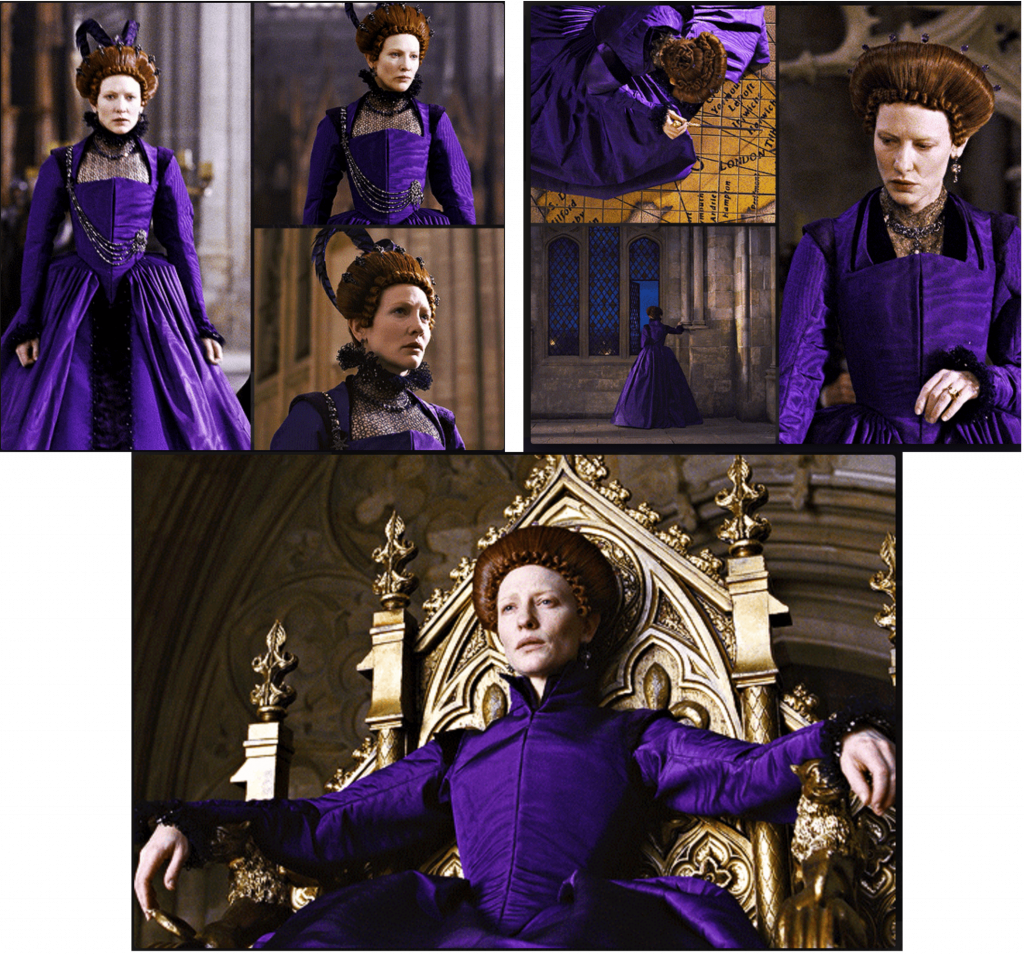
[Notice how from top left to right the ruff disappears and the partlet changes. Then in the final picture as she sits on the throne her bodice has changed. It’s subtle but it’s there]
And so I think you can use really strong costume, but tell a story within it that is almost subliminal, that people aren’t noticing. I like doing that.
Shall we talk a bit about The Flash, which you’ve most recently worked on? In the trailer, we briefly see a room full of bat suits with the retro ’66 bat symbol. What was your vision when redesigning this iconic costume?
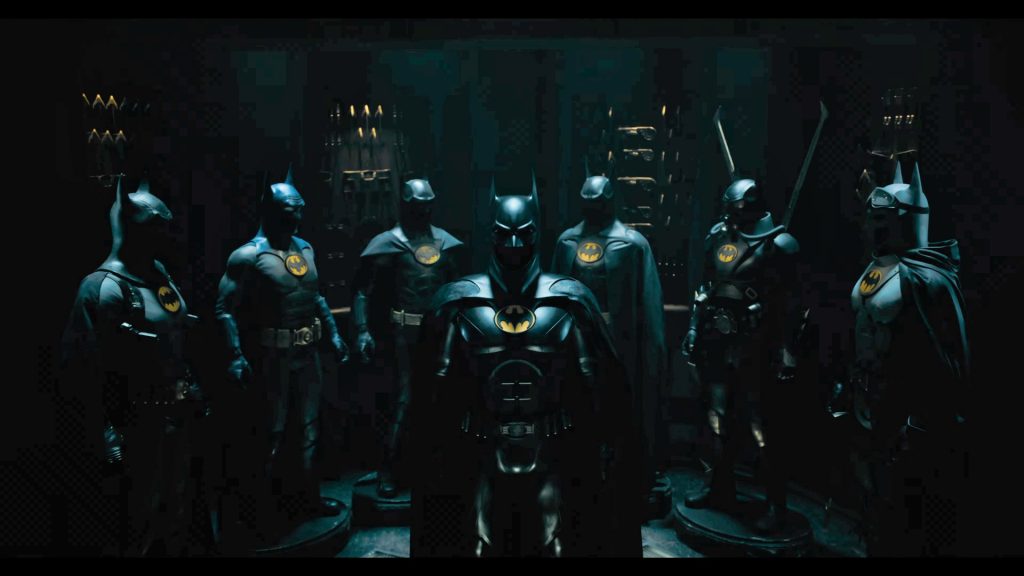
It was about how to be true to Tim Burton but also move things on. What has that man been doing in the intervening years? What has happened? How has it evolved? What do you want to say with the new bat suit, plus making the actor more comfortable because we have new materials and new technology which means you can do that. In talking to Michael Keaton, he felt very strongly that a lot of the performance came from the original suit in that, you know, he had to move his body stiffly. So he wanted to stick to a lot of that mobility.
You mention new technology – how do you stay up to date on current trends and how is the industry changing?
I just live in the world, and, of course, I look at fashion, but it’s all around us, really. When I started we didn’t have the internet, so research was very difficult. Research was heaving books down to the shop that happened to have a colour photocopier and paying a fortune and hoping you got your photocopies without breaking the spine of the book. It was really difficult to find images, whereas now it’s such a different process in that the internet is full of images, mostly labelled incorrectly. So you have to be much more discerning about what you believe as source material.
Also when I started you could go to markets and buy a lot of ‘20s, ‘30s fabrics, old laces, things like that. All that is now beginning to go. It’s not there anymore. And if it is there, it’s probably too fragile to be able to use in costumes. So you have to find a new way of creating your fabrics which is quite challenging. You know, Berwick Street used to be full of fabric shops and you could go down and find something. That’s all gone now, so it’s just a very different way of shopping now.
There are a lot of digital processes. There’s 3D printing, many things like that, but I think the costume department is probably the least digital department on a set because ultimately it comes down to fitting bodies. Every body that walks into the room is different, and you need to work with that body to create a character and you can’t do that digitally. For things to look effortless and support the story and work, sometimes you’re down to moving a seam by a quarter of an inch because the line on the body will be different and it will work differently. You can’t do that digitally. You have to do it on the body. You have to do it with your eye.
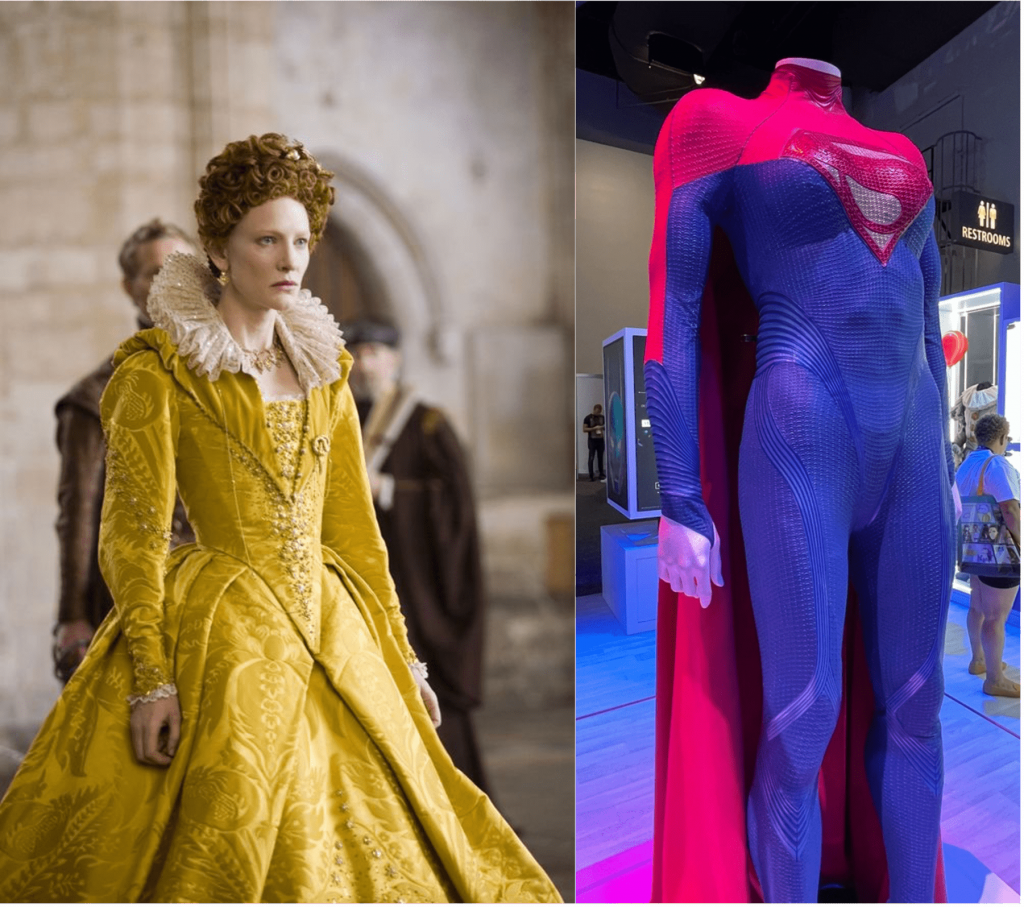
There was a great scene, again in Golden Age, when Kate’s Elizabeth is – I think it’s when she’s meeting the Spanish – she’s wearing a yellow dress and she’s striding down the name of yet another cathedral, and you can literally hear the petty coats cracking as she walks. They kind of whip, you know, and you’re never going to get that with digital work.
There’s a lot we do with 3D printing and technology but ultimately it comes down to hands on a table sewing the costume. In The Flash, Supergirl and her costume are digitally printed, but the print is warped to the body and the nature of the print on the fabric changes with stretch so you make constant adjustments. It comes down to hands and fitting and sewing and bodies.
So robots aren’t coming for your job anytime soon?
Oh, I’m sure they are, because, do you need actors? On Doctor Strange, we built the cape and it took many, many, processes and parts to build it, but in fight sequences and wire work, you can’t have the cape because it’ll foul on the cables. So you just have a kind of shoulder length cape, the head and shoulders, and the rest of it is replaced digitally.
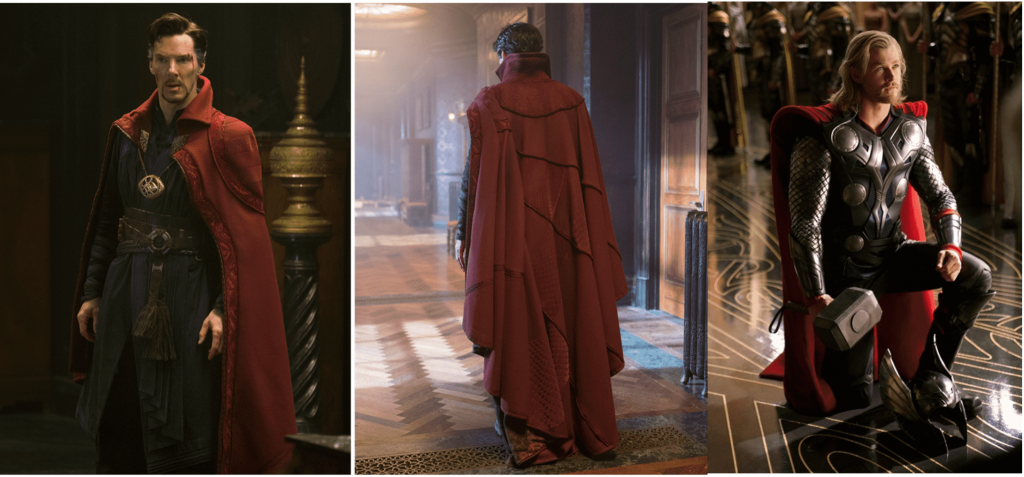
There are very interesting collaborations in terms of how you move because ultimately a body moves in a very specific way and sometimes the clothes don’t allow that. For example, in a lot of the early Thor costumes, we wanted breadth in the shoulders. But the way that he holds the hammer means that you’ve got to have real compression there – you’re always in that kind of crumple zone – so sometimes you have a cutaway costume and it’s digitally replaced where it needs to be.
A final question. You’ve previously said that experience has meant that you know when to stop with the ideas and start making the costumes. What’s something else you’ve learned over the years?
That you have to be allowed to fail. In a process, you have to be able to say, “no, I’ve got it wrong. That’s not working. We’ve got to start again.” That obviously involves time and money, so you have to be quite kind of bold. I just did a ballet at Covent Garden, and I knew that the dyeing on one piece wasn’t quite right. It would’ve been such a pain to have to redo it, but there’s a point where you go, “if I don’t call this now, then it’s going to be really, really painful two weeks down the line.” I think experience allows you to do that.
It’s a real balance of caring passionately, but not taking it personally, because if you take it personally, then everybody’s going to get hot and angry. We’re not saving the world, it’s entertainment, and we all want to do a really good job, and I think everybody depends on every department fighting for their corner and doing the very best that they can. But sometimes you have to take a step back and gain perspective. Many people will say, “wow, I’ve never seen you do that.” But in my head I do.
Let’s wrap up there then. Thank you so much for giving me your time today.
Thanks. Bye. Bye.
Interview by Isaaq Tomkins.
